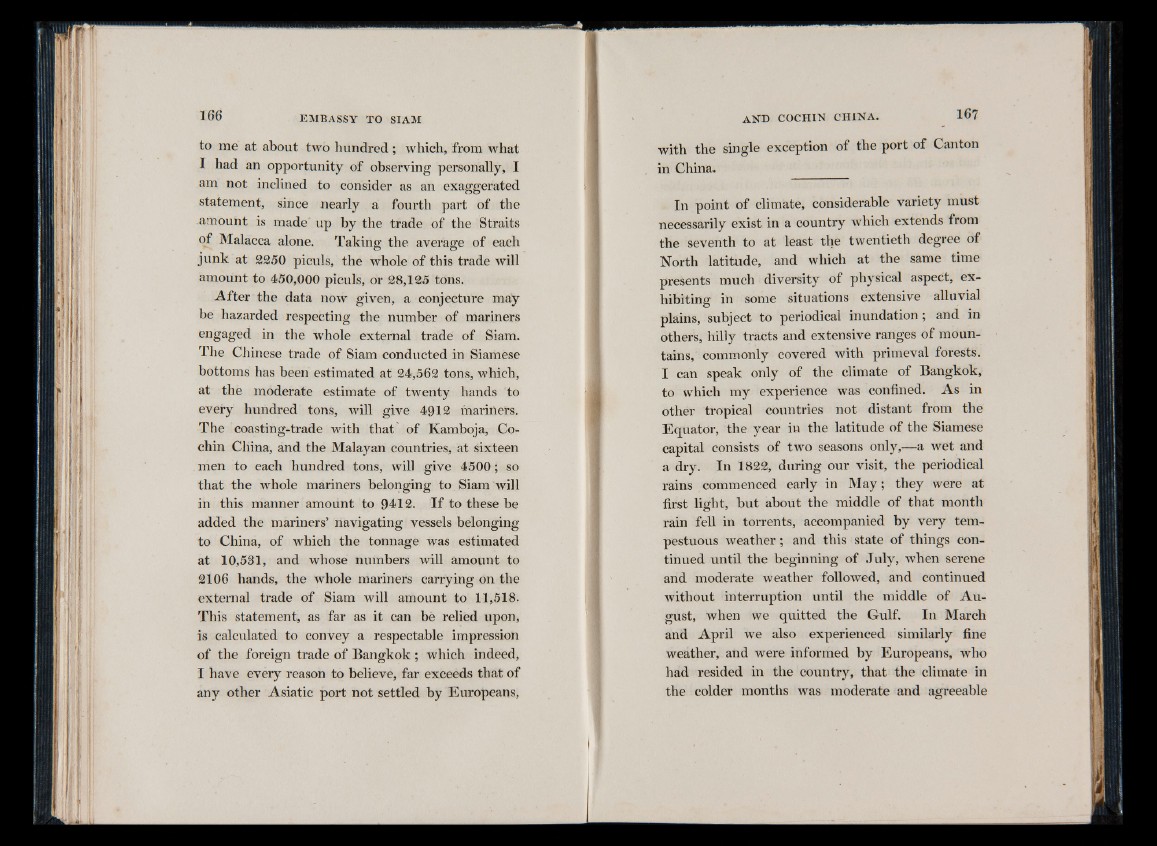
to me at about two hundred; which, from what
I had an opportunity of observing personally, I
am not inclined to consider as an exaggerated
statement, since nearly a fourth part of the
.amount is made up by the trade of the Straits
of Malacca alone. Taking the average of each
junk at 2250 piculs, the whole of this trade will
amount to 450,000 piculs, or 28,125 tons.
.After the data now given, a conjecture may
be hazarded respecting the number of mariners
engaged in the whole external trade of Siam.
The Chinese trade of Siam conducted in Siamese
bottoms has been estimated at 24,562 tons, which,
at the moderate estimate of twenty hands to
every hundred tons, will give 4912 mariners.
The coasting-trade with that of Kamboja, Cochin
China, and the Malayan countries, at Sixteen
men to each hundred tons, will give 4500; so
that the whole mariners belonging to Siam will
in this manner amount to 9412. I f to these be
added the mariners’ navigating vessels belonging
to China, of which the tonnage was estimated
at 10,531, and whose numbers will amount to
2106 hands, the whole mariners carrying on the
external trade of Siam will amount to 11,518.
This statement, as far as it can be relied upon,
is calculated to convey a respectable impression
of the foreign trade of Bangkok ; which indeed,
I have every reason to believe, far exceeds that of
any other Asiatic port not settled by Europeans,
with the single exception of the port of Canton
in China.
In point of climate, considerable variety must
necessarily exist in a country which extends from
the seventh to at least the twentieth degree of
North latitude, and which at the same time
presents much diversity of physical aspect, exhibiting
in some situations extensive alluvial
plains, subject to periodical inundation; and in
others, hilly tracts and extensive ranges of mountains,
commonly covered with primeval forests.
I can speak only of the climate of Bangkok,
to which my experience was confined. As in
other tropical countries not distant from the
Equator, the year in the latitude of the Siamese
capital consists of two seasons only,—a wet and
a dry. In 1822, during our visit, the periodical
rains commenced early in May; they were at
first light, but about the middle of that month
rain fell in torrents, accompanied by very tempestuous
weather; and this state of things continued
until the beginning of July, when serene
and moderate weather followed, and continued
without interruption until the middle of August,
when we quitted the Gulf. In March
and April we also experienced similarly fine
weather, and were informed by Europeans, who
had resided in the country, that the climate in
the colder months was moderate and agreeable